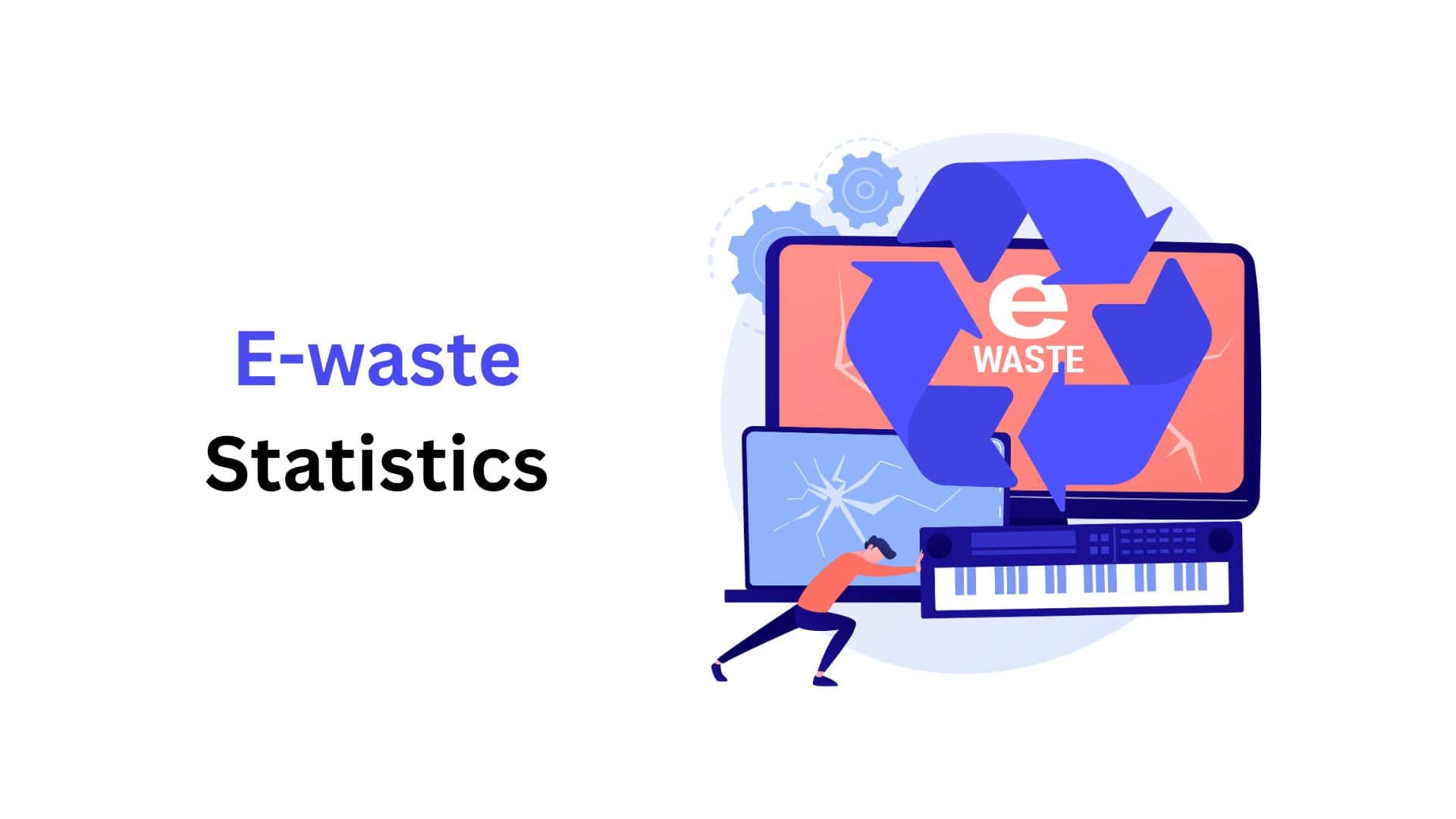Intelligent Document Processing Statistics And Facts (2025)

Updated · Oct 24, 2025

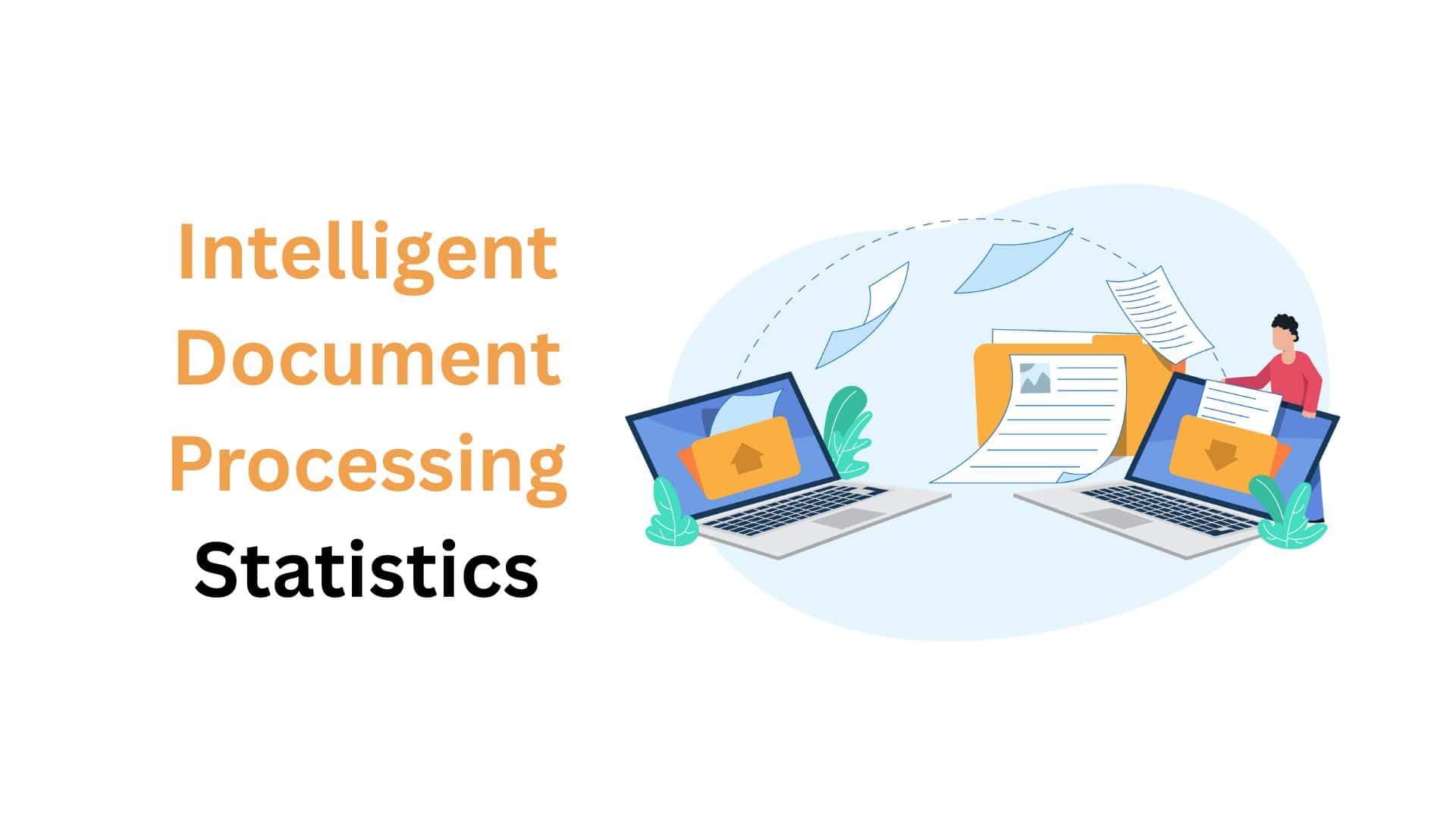
WHAT WE HAVE ON THIS PAGE
- Introduction
- Editor’s Choice
- Intelligent Document Processing Market Size
- Deployment and Technology Trends in IDP
- IDP Adoption Trends
- IDP Adoption by Industry
- ROI and Efficiency Metrics of IDP
- Compliance and Risk Mitigation Through IDP
- Business Efficiency and Productivity Gains
- Compliance and Risk Reduction
- AI and Technology Developments in Document Processing
- Improved Accuracy and Error Reduction
- Conclusion
Introduction
Intelligent Document Processing Statistics: The exponential growth of unstructured business data has unequivocally established Intelligent Document Processing (IDP) as a fundamental technology for modern digital transformation.
IDP solutions are leveraging sophisticated Artificial Intelligence (AI), Machine Learning (ML), and Computer Vision to automate the extraction, classification, and validation of data from diverse document types, ranging from simple invoices to complex legal contracts.
The volume of paperwork and digital documents, from PDFs to scanned copies, that organizations process daily represents a massive bottleneck and a persistent source of high-cost errors.
Keeping that in mind, I’d like to discuss the IDP statistics in more detail, specifically focusing on overcoming this challenge with a solution. Let’s break down everything and provide you with all the necessary details you need to know.
Editor’s Choice
- According to Market.us, the Global Intelligent Document Processing Market is projected to reach USD 17,826.4 million by 2032, rising from USD 1,933.5 million in 2023, growing at a CAGR of 28.9% during 2023–2032.
- About 63% of Fortune 250 companies have already integrated some level of advanced IDP into their operations.
- IDP reduces document processing time by 60% to 70% compared to manual workflows.
- In banking and insurance sectors, manual document handling still represents 20% to 30% of total operational costs.
- Companies using advanced IDP systems achieve a Return on Investment between 200% and 300% within the first year of deployment.
- AI-driven IDP platforms reach data extraction accuracy rates of up to 99% for structured and semi-structured documents.
- Human error rates in document processing drop by more than 52% after adopting IDP solutions.
- During the COVID-19 pandemic, 55% of organizations highlighted faster document processing as the top benefit of IDP, while 54% noted improved employee collaboration.
- IDP implementation typically cuts total processing time by 50% or more, enhancing productivity and data precision.
- More than 80% of enterprises plan to boost spending on document automation by 2025 to meet cost and compliance objectives.
- The global automation ecosystem—including RPA, IDP, and AI—is expected to exceed USD 30 billion by 2025.
- Over 65% of Fortune 500 companies have already embraced document automation technologies.
- Companies using IDP record document processing speeds nearly four times faster than those relying on manual systems.
- By 2025, around 75% of enterprises are anticipated to integrate IDP with ERP platforms for full workflow automation.
- Approximately 60% of organizations identify regulatory compliance as the main reason for investing in document automation.
Intelligent Document Processing Market Size
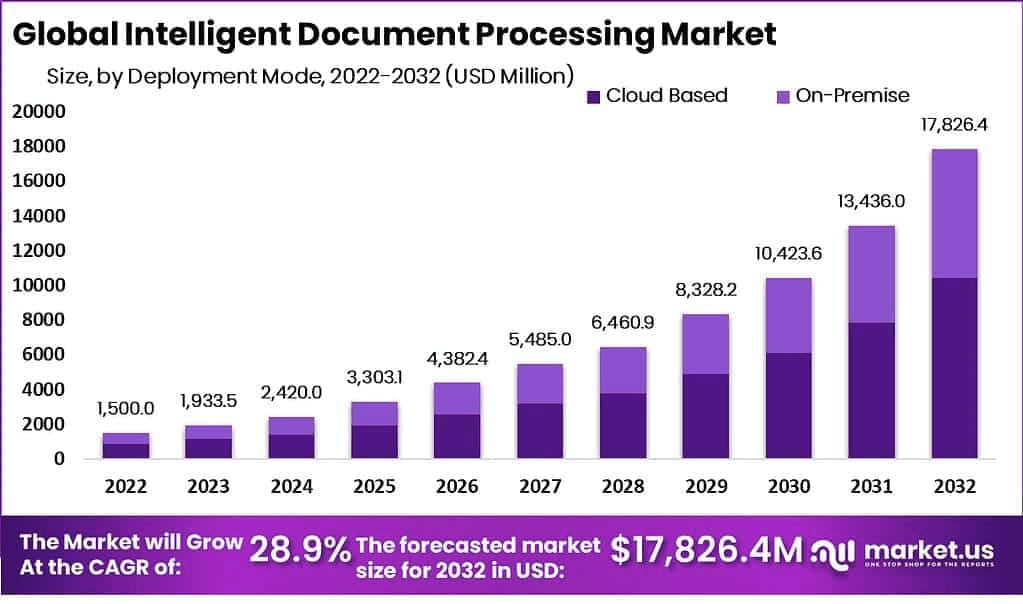
- According to Market.us, the Global Intelligent Document Processing (IDP) Market is projected to reach USD 17,826.4 million by 2032, rising from USD 1,933.5 million in 2023, with a strong CAGR of 28.9% during 2023–2032.
- In 2023, the IDP market was valued at USD 1,933 million, and it is expected to grow consistently each year until 2032.
- The cloud-based deployment model captured about 58.4% of total revenue due to its simple setup and lower cost compared with on-premise systems.
- Machine learning technology accounted for around 46.8% of revenue, followed by natural language processing, both helping in fast and accurate data extraction from documents.
- Large enterprises represented about 73.6% of total usage, as they handle a higher volume of documents daily.
- The BFSI sector showed major adoption because IDP helps improve accuracy and speed in financial document management.
- North America dominated the global market with a share of 32.6%, driven by advanced automation adoption and strong digital infrastructure.
- IDP can cut processing time by 50% or more, which directly increases productivity and reduces manual effort.
- The ROI from IDP is high, with potential savings between 30% and 200% in the first year, mainly due to reduced labor costs and better resource utilization.
- A financial firm reported saving USD 2.9 million per year by reducing manual data extraction tasks.
- An engineering company improved its RFP response time from three weeks to one week, achieving a 400% rise in RFP processing capacity.
- IDP can lower the error rate by over 52%, reaching accuracy levels of up to 99%, ensuring higher data reliability.
- The technology can also reduce document processing time by 50–70%, resulting in faster business operations.
- Organizations adopting intelligent automation have achieved an average cost reduction of 32%, compared to 24% in 2020.
- Around 75% of companies in 2023 considered IDP a key tool for digital transformation.
- For 68% of organizations, data security and regulatory compliance were the main reasons for adopting IDP solutions.
Deployment and Technology Trends in IDP
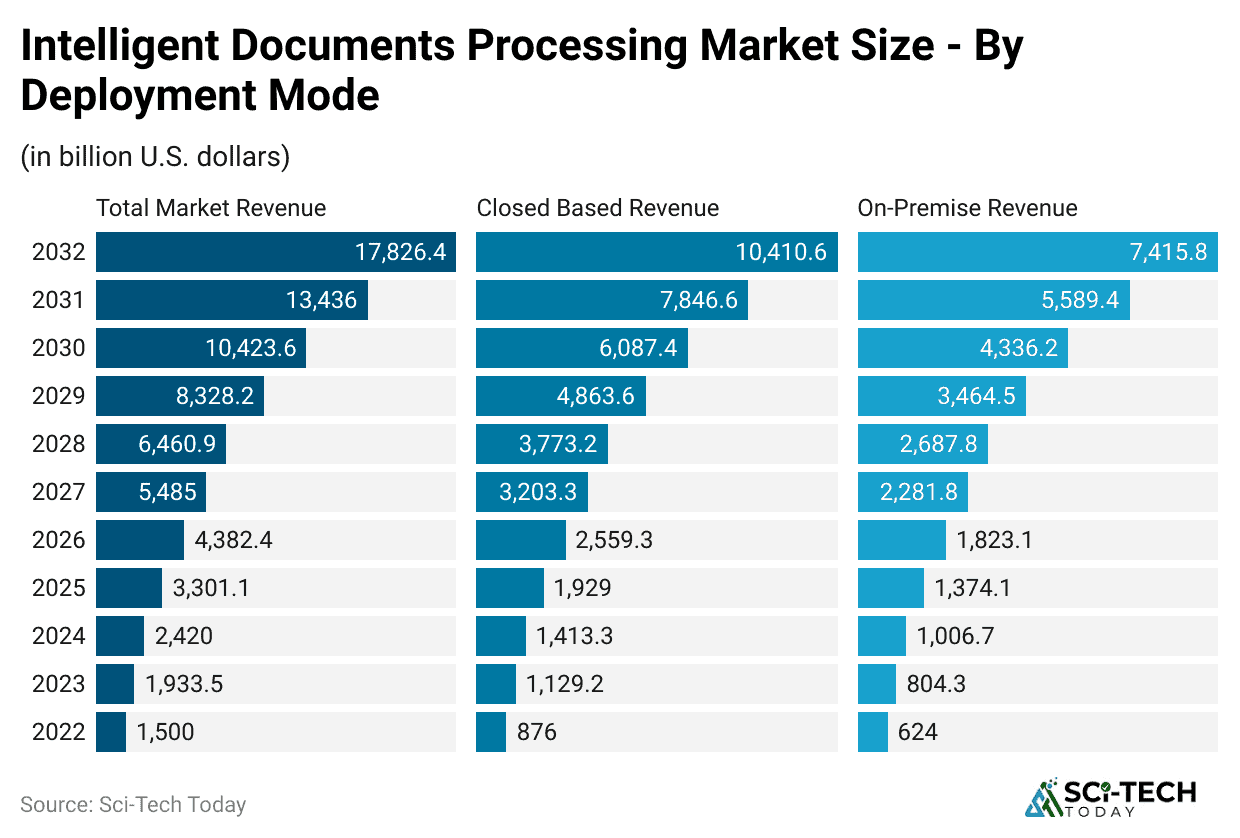
- The Cloud-based deployment model has clearly outpaced on-premise solutions, currently accounting for approximately 60% of the market share and projected to grow at the fastest CAGR of 32.92% between 2025 and 2032.
- Natural Language Processing (NLP) is emerging as the fastest-growing technology segment in IDP, expected to register a CAGR of approximately 33.65% as companies increasingly demand deep contextual understanding and semantic analysis of complex, unstructured text data.
- Traditional Optical Character Recognition (OCR) is now a foundational, non-negotiable component of IDP, but modern AI-driven solutions elevate accuracy to new levels, achieving up to 90% accuracy in extracting data even from highly unstructured documents like contracts.
- Machine Learning (ML) models are essential to the long-term value of an IDP system, as their performance improves by an estimated 5% to 10% annually as they continuously learn from new document variations and human-in-the-loop feedback.
- Over 70% of all IDP solutions are anticipated to feature open APIs by 2025, a critical statistic that ensures seamless integration with core enterprise resource planning (ERP), customer relationship management (CRM), and accounting platforms for end-to-end automation.
- The deployment cycle for enterprise-level IDP solutions has been drastically reduced to less than 8 weeks on average, a significant improvement largely attributable to AI pre-training and the use of pre-configured templates for common document types.
- A substantial 45% of all contemporary IDP platforms are now incorporating built-in Human-in-the-Loop (HITL) capabilities, a crucial component that facilitates continuous model refinement and ensures a high-quality feedback loop for ongoing accuracy improvements.
| IDP Technology Breakdown | Deployment Metrics |
| Deployment Dominance |
Cloud-based, with 60% market share |
|
Fastest Growing AI Segment |
Natural Language Processing (NLP) at a 33.65% CAGR |
| Extraction Accuracy (Unstructured) |
Up to 90% with advanced AI/ML models |
|
Annual Model Improvement |
5% to 10% through continuous learning |
| API Integration Rate (2025 Projection) |
Over 70% of IDP solutions will offer APIs for integration |
IDP Adoption Trends
- Intelligent Document Processing (IDP) is being rapidly adopted by large companies. Around 63% of Fortune 250 enterprises have already deployed IDP, with the financial sector leading at 71% adoption. Over recent years, its use has expanded across banking, insurance, and retail to streamline document-intensive operations.
- IDP software solutions account for nearly 65% of total market revenue, while services like integration, consulting, and support make up about 35%. This indicates that organizations rely mainly on ready-to-use IDP platforms while continuing to depend on service providers for smooth implementation.
- The use of cloud-based IDP systems is rising quickly. Adoption of these systems is expected to increase by about 12% each year as companies move away from on-premise setups. Cloud platforms offer faster deployment, easier scalability, and lower hardware costs, making them a preferred choice for modern enterprises.
- Nearly 80–90% of new enterprise data is unstructured, including documents, emails, and images. However, only about 18% of organizations are currently utilizing this unstructured data effectively, leaving a major opportunity for IDP to unlock hidden business insights.
- Based on data from McKinsey, about 70% of companies are testing automation tools for workflows, and nearly 90% plan to expand these efforts across their entire organization within the next 2–3 years. This shows that automation, especially in document processing, is now a top priority.
- Gartner data shows that 50% of organizations are adopting new data-quality solutions. IDP plays a central role here by converting unstructured documents into structured, usable information that enhances accuracy and decision-making.
- The banking, financial services, and insurance (BFSI) sector contributes nearly 30% of total IDP spending. These industries are major users of IDP for automating operations like claims management, loan processing, and underwriting.
- North America leads global IDP adoption, holding about 55% of total market share. Meanwhile, Asia-Pacific, Latin America, and the Middle East are recording fast growth as businesses in these regions increase their focus on digitization and paperless workflows.
IDP Adoption by Industry
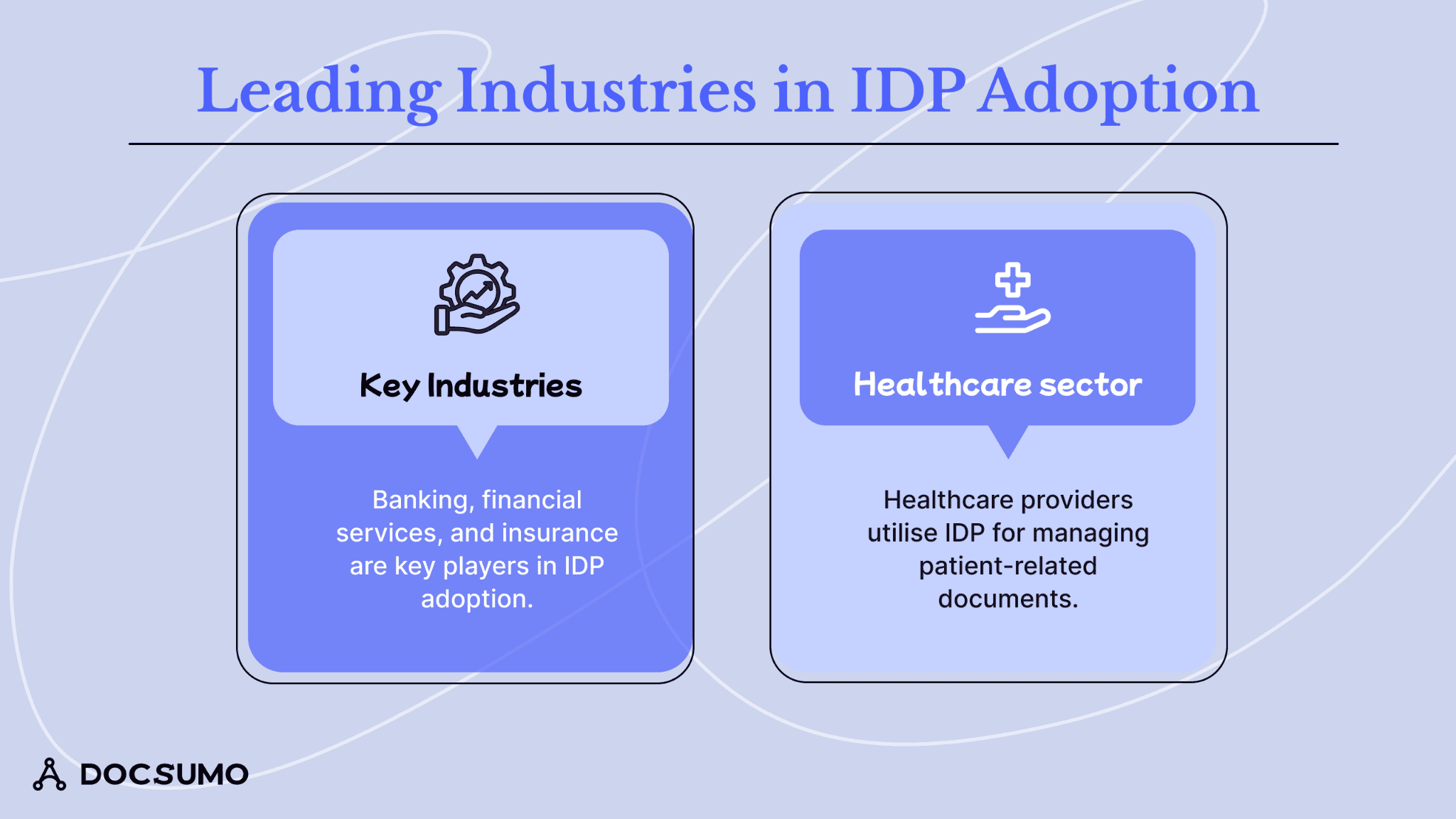
Financial Services (BFSI)
- An overwhelming 88% of financial institutions have prioritized document automation as a critical pillar of their digital transformation strategy for 2025.
- In the banking segment, implementing automated document verification has resulted in an average 30% reduction in the time required for Know Your Customer (KYC) onboarding.
- For the insurance industry, a significant 67% of companies are actively testing or have already adopted IDP solutions to optimize time-consuming processes like underwriting and claims management.
- Automating complex and sensitive financial document workflows has led to a measurable 25% decrease in internal fraud risk within organizations that have successfully deployed IDP systems.
Healthcare and Life Sciences
- Healthcare providers utilizing document automation have successfully cut the processing time for patient records by up to 50%.
- The mitigation of specific compliance risks, such as those related to HIPAA, is achieved by up to 70% in healthcare organizations that adopt automated document workflows for sensitive data.
- In the highly regulated pharmaceutical sector, 82% of enterprises recognize document automation as absolutely crucial for maintaining rigorous audit compliance standards.
Manufacturing and Logistics
- More than 70% of logistics companies are actively implementing document processing automation to streamline complex customs documentation and significantly enhance the speed and accuracy of shipment tracking operations.
- Manufacturing companies have realized a considerable 35% reduction in their overall procurement cycle times by successfully automating the classification and processing of purchase orders and related supplier documents.
- Automated document management is a key factor in supply chain resilience, with IDP providing the necessary speed and accuracy to handle the vast and diverse set of documents involved in global trade and production.
| IDP Adoption by Sector | Adoption Analysis |
| Financial Institutions Focusing on Automation (2025) | 88% |
| Banking KYC Time Reduction | 30% |
| Healthcare Patient Record Processing Time Cut | Up to 50% |
| Manufacturing Procurement Cycle Time Reduction | 35% |
| Logistics Companies Implementing Automation | More than 70% |
| Insurance Companies Adopting/Testing IDP | 67% |
ROI and Efficiency Metrics of IDP
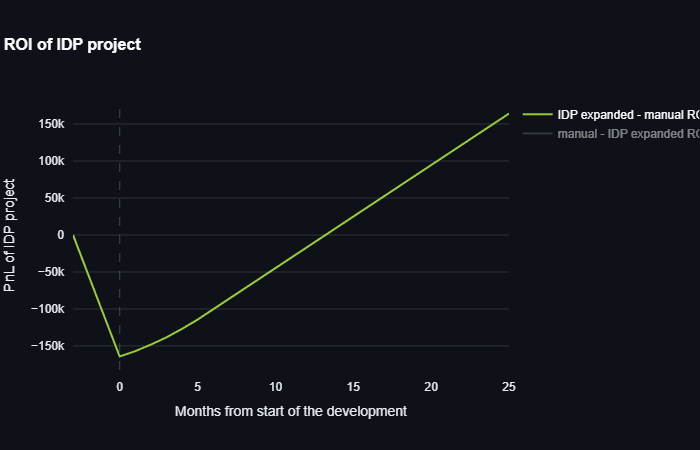
- Companies that use IDP have reduced human error rates by nearly 90%, compared with manual data entry.
- A financial services company saved around $2.9 million each year by reducing its data extraction team by half after adopting an enterprise-wide IDP system.
- Invoice processing time, which usually takes about 12 days manually, has been cut to less than 3 days on average with automation.
- Businesses have saved between $8 and $12 per document processed by replacing manual workflows with automation tools.
- Around 60% of companies have reported improved financial visibility due to faster invoice and payment processing enabled by IDP.
- Automating purchase order approvals and matching processes has reduced related operational costs by up to 40%.
- An engineering firm shortened its Request for Proposal (RFP) response cycle from three weeks to one week and achieved a 400% increase in processing capacity using IDP.
- The use of intelligent automation supported by IDP is projected to deliver an average 31% reduction in organizational costs within the next three years.
- The return on investment from document automation is strong, with organizations typically realizing a 200–300% ROI during the first year.
- Businesses using document automation have reduced document processing time by 60–70%, improving overall efficiency.
- Through digital automation, companies have achieved around a 50% cut in costs related to document storage and retrieval.
- Approximately 70% of enterprises using IDP report higher customer satisfaction, mainly due to faster document handling and approval processes.
| IDP ROI & Efficiency Gains | ROI Metrics |
| Average First-Year ROI | 200% to 300% |
| Reduction in Document Processing Time | 60% to 70% |
| Reduction in Human Error Rate | Up to 90% |
| Cost Savings Per Document | $8 to $12 |
| Invoice Processing Cycle Time Reduction | From 12 days to under 3 days |
| Operational Cost Reduction (e.g., PO matching) | Up to 40% |
Compliance and Risk Mitigation Through IDP
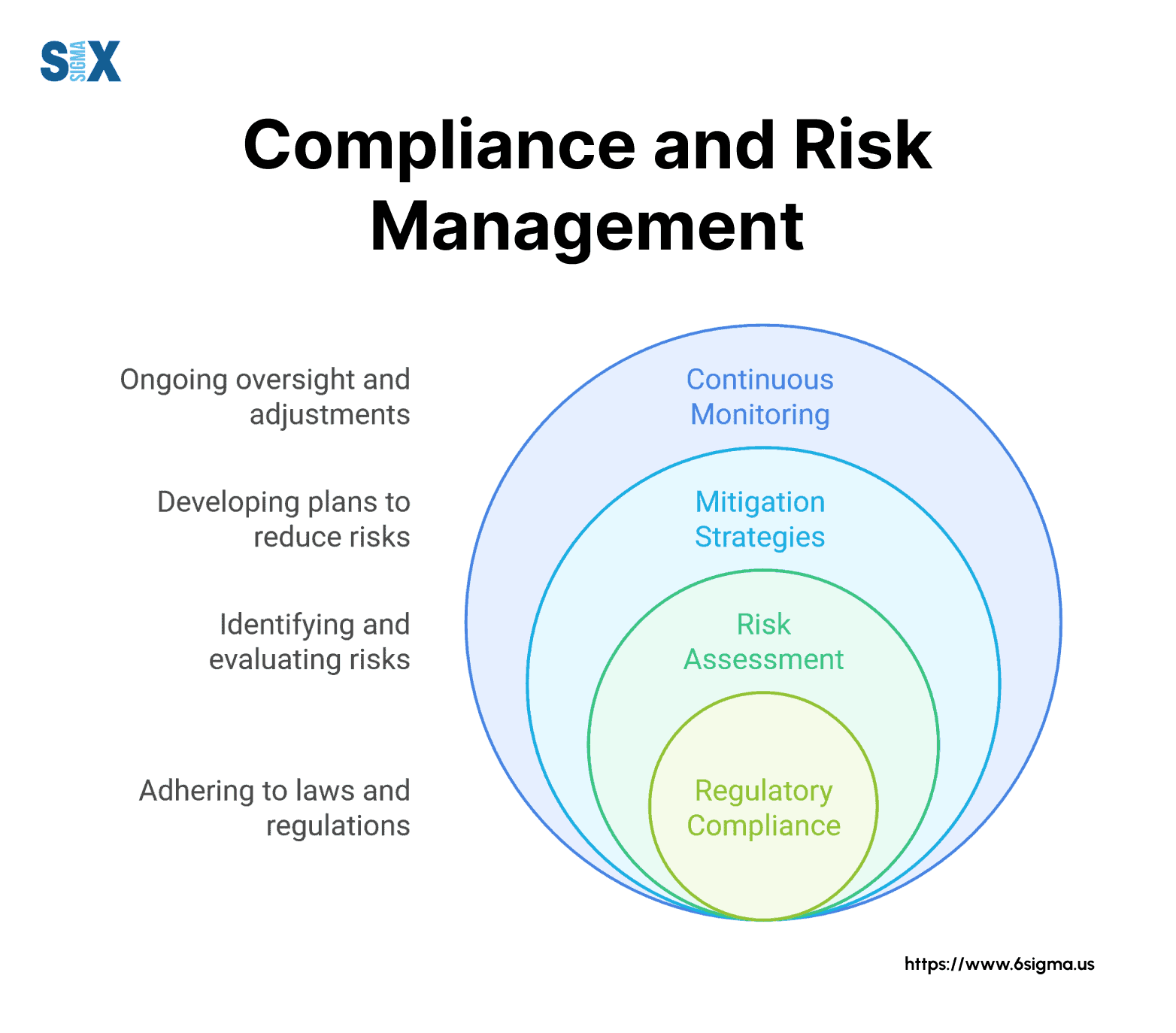
- Organizations leveraging sophisticated IDP systems experience a profound reduction in compliance-related errors, with rates dropping by up to 85% compared to manual processes.
- Manual document handling is a major source of data breaches, which cost companies an average of US$4.45 million per incident worldwide.
- A significant 52% of enterprises explicitly adopt document automation technology with the core objective of lowering the probability and potential cost of severe regulatory fines.
- The time required to complete necessary compliance audits is dramatically cut by 40% to 50% for organizations that use automated audit trails and structured data capture enabled by IDP.
- In regions governed by strict data protection laws, such as the EU, over 60% of companies actively utilize automation tools, including IDP, to ensure strict adherence to GDPR and other complex data protection mandates.
- Companies that implement automated document validation and rule-checking report an average of 30% fewer disputes and discrepancies arising from contracts and vendor agreements.
- In the fight against financial crime, automated document processing in the banking sector is actively enhancing anti-money laundering (AML) compliance by reducing false positives by an impressive 40%.
- The highly secure, auditable digital trails created by IDP are crucial for highly regulated industries, directly contributing to the fact that 68% of organizations cite data security and compliance as a primary motivation for adoption.
| IDP Compliance & Risk Stats | Risks and Challenges Metrics |
| Reduction in Compliance-Related Errors | Up to 85% |
| Enterprises Adopting IDP to Reduce Regulatory Fines | 52% |
| Reduction in Audit Time | 40% to 50% |
| Fewer Contract/Vendor Disputes | 30% |
| AML False Positive Reduction (Banking) | 40% |
| Motivation for IDP Adoption (Data Security/Compliance) | 68% |
Business Efficiency and Productivity Gains
- Intelligent Document Processing (IDP) has reduced document handling time by 50% or more, allowing companies to complete tasks in minutes instead of hours. For instance, a logistics company using Docsumo lowered its processing time from over 7 minutes per file to under 30 seconds, achieving over 90% faster results, which led to quicker customer responses and higher employee capacity.
- According to studies, automation through IDP offers a 30–200% return on investment within the first year, mainly because of reduced labor expenses. Many organizations recover their initial investment within months due to a significant drop in manual work.
- With document automation, employees spend less time on repetitive data entry and more on creative or analytical projects. This shift improves overall productivity and enhances job satisfaction, as workers engage in more meaningful responsibilities.
- Companies using IDP achieve direct labor cost savings. One financial services firm saved $2.9 million annually by reducing its manual data extraction team by half. Another insurer reassigned 80 employees to higher-value roles after automating document interpretation.
- IDP allows organizations to process more work efficiently. An engineering firm shortened its RFP response time from three weeks to one week, enabling it to manage 400% more proposals and increase its win rate by 40%, improving competitiveness.
- Roughly 70% of data entry tasks can now be automated with IDP solutions, freeing employees to handle exceptions and complex cases. Docsumo’s platform automatically extracts and organizes document data that would otherwise require manual entry.
- In accounts payable operations, an employee who once processed about 20 invoices daily can now process 60% more using IDP. Gartner projects that by 2025, 50% of B2B invoices worldwide will be processed without manual involvement, indicating a major shift in financial workflows.
- During the COVID-19 pandemic, 55% of businesses identified faster document processing as the biggest benefit of digitization. Many relied on Docsumo’s cloud-based platform to manage increased digital workloads and ensure uninterrupted operations remotely.
- Improved digital collaboration was another advantage, with 54% of organizations reporting better teamwork after adopting IDP. Around 33% gained more process flexibility, and 32% experienced higher engagement as data became easily shareable and searchable, enhancing cross-team efficiency.
- IDP has become critical for remote work environments. It automates tasks such as email sorting, data extraction, and form validation, ensuring continuous processing of activities like loan approvals and insurance claims even when employees work remotely.
- Real-world evidence confirms these benefits. Vertikal, a risk management company, saved $20,000 annually and cut document processing time by 40% after adopting Docsumo’s platform. These savings improved both efficiency and client service quality.
Compliance and Risk Reduction
- Organizations using automated document workflows reduce compliance-related mistakes by up to 85%, helping them meet strict regulations more effectively.
- Manual document handling has been linked to an average global loss of $4.45 million per data breach, highlighting the high financial cost of human errors.
- Around 52% of enterprises have adopted document automation mainly to avoid penalties related to regulatory violations.
- The use of automated audit trails helps reduce compliance audit times by 40–50%, improving reporting and transparency.
- More than 60% of companies in the European Union use automation tools to comply with GDPR and data protection standards.
- Businesses implementing automated document validation have seen 30% fewer disputes in contracts and vendor agreements.
- Internal financial fraud risks fall by about 25% when automated and secured document workflows are used.
- In the banking industry, automated document processing helps improve AML compliance by cutting false positives by 40%.
- Healthcare institutions that automate their document workflows experience up to a 70% reduction in risks linked to HIPAA compliance.
AI and Technology Developments in Document Processing
- AI-based systems now extract data from structured documents with up to 99% accuracy, improving reliability in automated workflows.
- Natural Language Processing (NLP) enables solutions to interpret and classify unstructured data with 85–90% accuracy.
- Machine learning models in document automation improve by 5–10% each year as they process more data and refine predictions.
- Organizations adopting AI-powered intelligent document processing record a 3x faster data validation speed compared with traditional OCR methods.
- Deep learning technology has enhanced handwriting recognition, achieving over 80% accuracy in reading handwritten forms and archived documents.
- Around 45% of document automation tools now use human-in-the-loop systems that support ongoing model learning and correction.
- Cloud-based document processing has helped reduce infrastructure expenses by 30–40%, compared with locally hosted systems.
- More than 70% of intelligent document processing solutions in 2025 support API integration with ERP, CRM, and financial management platforms.
- The time to deploy enterprise-level automation solutions has decreased to under 8 weeks, helped by AI pre-training and ready-to-use templates.
Improved Accuracy and Error Reduction
- According to industry findings, Intelligent Document Processing can reduce data extraction and entry errors by over 52%, ensuring more reliable records and less time spent fixing mistakes.
- Automated document capture through IDP replaces manual data entry, minimizing human errors and improving consistency in data handling.
- Advanced IDP systems reach up to 99% accuracy in reading and interpreting complex documents, achieving near-perfect precision even across varied layouts.
- Companies using AI-driven IDP solutions have reported that data extraction is up to 10× faster, while maintaining 99.9% accuracy, which demonstrates that automation can deliver both speed and quality together.
- Straight-Through Processing rates in top IDP implementations often exceed 95%, meaning most documents are processed automatically without human input, improving operational efficiency and consistency.
- Document verification time can be reduced by up to 85%, as IDP systems automatically validate information and flag errors, accelerating approval and compliance workflows.
- Traditional OCR tools generally reach only around 60% accuracy when reading handwritten or complex documents, while IDP uses AI, NLP, and machine learning to understand document context and deliver near-human accuracy.
- The integration of these AI-powered techniques ensures that organizations maintain cleaner, faster, and more trustworthy data compared with outdated OCR systems.
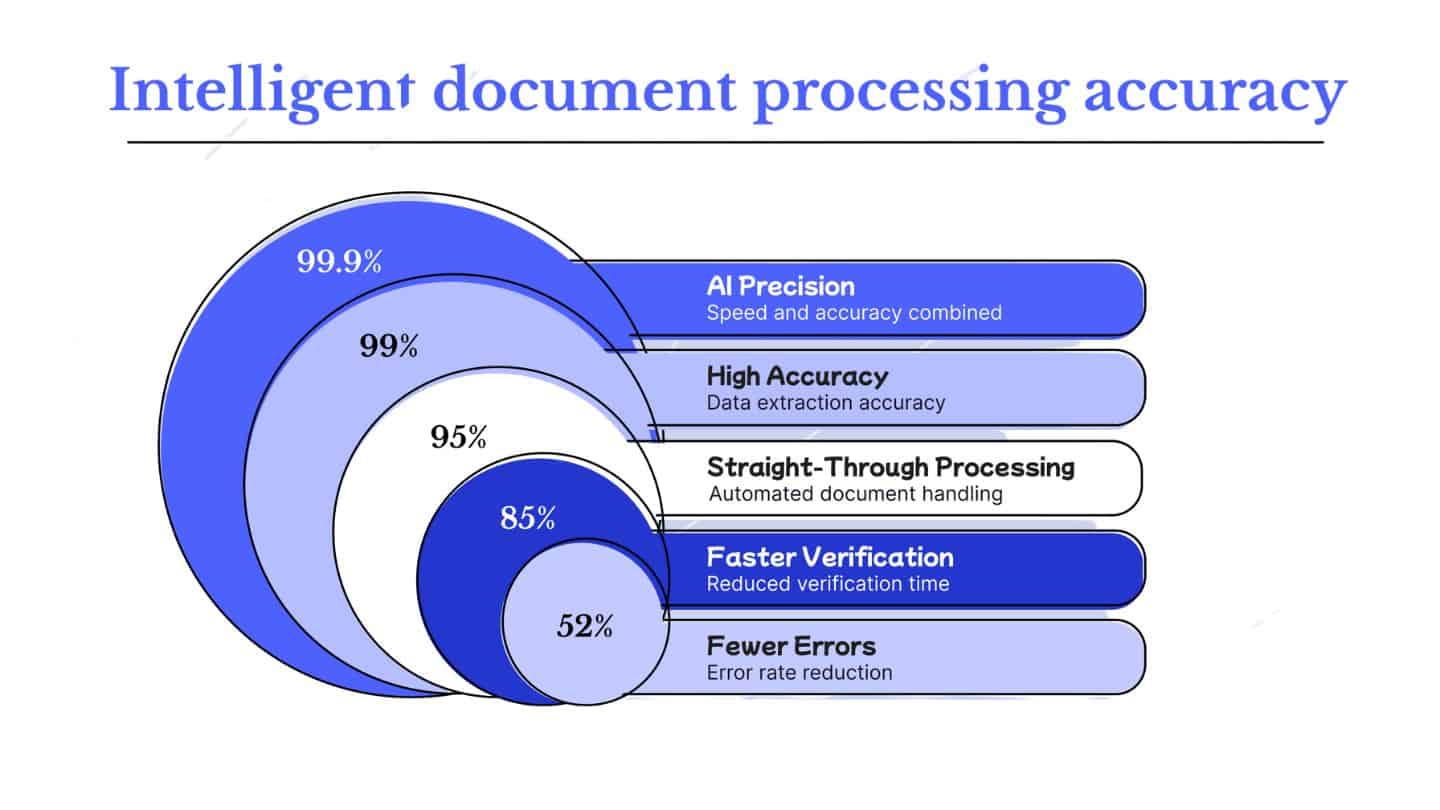
Conclusion
Overall, this statistical landscape makes it abundantly clear: Intelligent Document Processing (IDP) is a foundational technology for any enterprise aiming for operational growth in this digital age.
From a market perspective, its projected growth to over $54 billion by 2035 is a testament to its critical value. Operationally, the ability to reduce processing time by up to 70% and cut error rates by up to 90% translates directly into millions in savings and a significant competitive edge.
The data shows that major enterprises and highly regulated industries, from the 88% of financial institutions focusing on document automation to the 75% of organizations prioritizing IDP implementation, are already betting heavily on this technology. As Generative AI and Machine Learning continue to push extraction accuracy closer to the 99% mark, the final barriers to full straight-through processing are rapidly fading.
I hope you guys really find this article useful. Thanks for staying up till the very end. If you have any questions, you can always let us know.
FAQ.
The global Intelligent Document Processing market is experiencing massive growth. The market size, valued at approximately $2.56 to $3.0 billion in 2025, is projected to soar to between $54.5 billion and $54.7 billion by 2035. This exponential growth is driven by a high Compound Annual Growth Rate (CAGR) of around 32-33% over the forecast period.
Companies that fully implement IDP often report a rapid and significant Return on Investment (ROI).
- The automation of document processes can yield an ROI ranging from 100% to over 300% within the first year of implementation, primarily through labor and error-reduction savings.
- In specific high-volume areas like Accounts Payable, automation of invoice processing can drop the per-invoice cost from a manual average of $12 to $35 down to an automated cost of around $5.
In document-heavy and regulated industries like Banking and Insurance (BFSI), manual document processing still accounts for an estimated 20% to 30% of total operational costs. IDP directly targets and significantly reduces this non-value-added expenditure.
IDP delivers drastic efficiency improvements, resulting in:
- An average reduction in document processing time of 60% to 70%.
- This translates to an average processing speed that is 4 times faster than manual methods.
- For example, invoice approval cycles have been observed to shrink from 10 to 15 days to under two days in some cases.
Modern IDP systems, which leverage Deep Learning and AI, achieve a very high degree of accuracy:
- On structured or semi-structured documents (like forms and standard invoices), advanced IDP solutions can achieve data extraction accuracy rates of up to 99%.
- Overall, the introduction of IDP helps to reduce the human error rate in data entry by over 52% to as much as 80 to 90%.
The Banking, Financial Services, and Insurance (BFSI) sector is the leading and most mature adopter, driven by document volume and strict regulatory compliance needs.
- An estimated 71% of major financial institutions have implemented IDP solutions.
- The Healthcare and Government/Public Sector are also high adopters due to the massive volumes of patient records, permits, and administrative paperwork they handle.
The top three primary drivers for adopting IDP are consistently cited as:
- Cost Reduction (through automation of labor).
- Regulatory Compliance and Risk Mitigation (ensuring accurate data for audits, like KYC/AML).
- Improved Data Accuracy (leading to better business intelligence and fewer errors).
A significant portion of the world’s largest companies have moved past the pilot stage. Recent surveys show that over 65% of Fortune 500 companies have adopted some form of document automation, with 63% of the Fortune 250 specifically having integrated IDP solutions.

Jeeva Shanmugam is passionate about turning raw numbers into real stories. With a knack for breaking down complex stats into simple, engaging insights, he helps readers see the world through the lens of data—without ever feeling overwhelmed. From trends that shape industries to everyday patterns we overlook, Jeeva’s writing bridges the gap between data and people. His mission? To prove that statistics aren’t just about numbers, they’re about understanding life a little better, one data point at a time.




